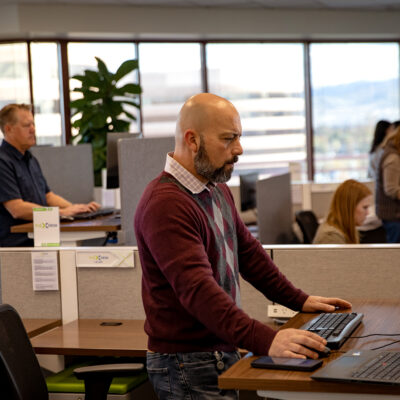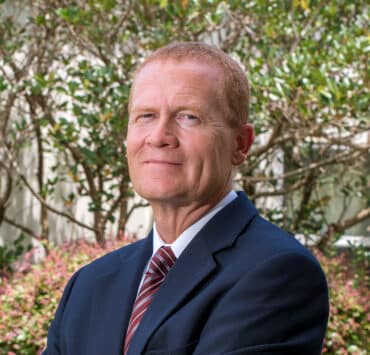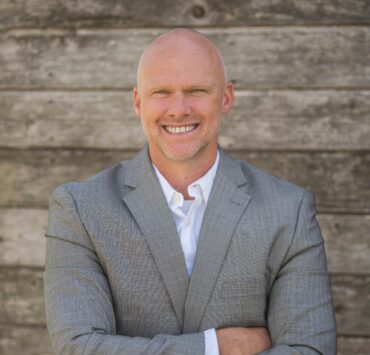|
Getting your Trinity Audio player ready...
|
As vice president of real estate and workplace services at Nutanix, Michael Phelps elevates the experience for employees and visitors who enter its facilities.
Instead of going for gold on each project he delivers, Phelps helps keep the cloud computing software company grounded. He looks beyond data and gauges what his staff members need with heart-to-heart conversations: his presence in meetings is anything but superficial.
Plus, he pivots accordingly when presented with obstacles. The VP responded to COVID-19 by working with a cross-functional team in the company’s efforts to go hybrid and repurposing its global headquarters in San Jose, California.
Phelps spoke with American Builders Quarterly about his impact on Nutanix’s organizational culture.
Seventy percent of companies have gone hybrid. How do you navigate Nutanix through this transition differently from the rest of corporate America?
Feedback and employee sentiment were key for us. We conducted several surveys to take the pulse of our employees. We also created cross-functional teams to get ongoing feedback that was comprised of legal, HR, real estate, IT, and communications, who met regularly as we designed our approach.
We were careful not to make rash decisions that would have to be retracted at a later date. Being transparent, trusting our employees, and having alignment were the only ways we got to where we are as a hybrid-first organization.

What obstacles do your teams need to overcome to make this happen?
There were three main things we had to address. First, we weren’t sure when things would go back to normal. Once we all understood that we are simply in a new normal, the second hurdle was how we could make coming into the office enticing after two years of working comfortably from home.
The third was making sure we could have an effective hybrid approach while making sure our employees were still safe. On the facilities team, we think of ourselves as being in the hospitality business and committed to a great workplace experience.
You’re also introducing a workplace experience tool to Nutanix employees. How does this fit into your long-term goals for the company, and how is it coming along?
Before the pandemic, everyone had a dedicated seat. Now, we are deploying a tool to reserve seats at locations where dedicated seats are no longer available. We’ve worked hard to design this new workplace experience tool to make the booking experience easy and useful.
Besides just booking a seat, employees will be able to see what events are happening onsite, what food options will be available that day, and what amenities are in the building. One of the best features is what we are calling Find a Friend, where employees can opt-in to allow other people to see what days you booked a seat and where to foster better collaboration.
“The best thing you can do is listen to the employees (your customers) when creating an office environment. Make them a part of the design process.”
Michael Phelps
How difficult was it to consolidate Nutanix’s headquarters?
Employees come into the office with more purpose in mind, whether it’s to enjoy a catered lunch with teams or to meet with colleagues. We found employees were excited about consolidating our dispersed offices in San Jose into one main building, as it helps facilitate that purposeful collaboration.
The employees wanted to feel the buzz and energy of people being together and being in one space makes that easier. Our company culture is very social and that fell right in line with what we wanted.
What do companies get right and wrong when creating office environments for their employees?
The best thing you can do is listen to the employees (your customers) when creating an office environment. Make them a part of the design process. In addition, it’s important not to take a one-size fits-all approach. Different teams have different needs, and they evolve over time. Some need more time in the office together and some less. Continuous listening and learning to accommodate these changing needs are important.
Does it just boil down to creating an office with a sense of purpose, or is there more to it?
There are a lot of things to consider. For one, you need to make sure the office is set up so it can be as productive of an environment as possible for employees. An employee should be able to disconnect their laptop from home, head to the office, and when they get there, just plug back in and get to work.
The meeting rooms need to be well equipped with technology that makes it easy to connect with people via video conference or use tools like digital whiteboards as well as collaboration spaces. Building those connections and social capital is invaluable.

What has your experience with turning Nutanix into a hybrid-first work environment taught you?
This experience has taught me that we should have been working in some fashion like this before the pandemic. We essentially conducted a huge social experiment and learned that a hybrid-first environment works really well—as long as it’s well-enabled.
What advice do you have for in-house facilities and real estate leaders at companies that want to become hybrid-first organizations?
There’s no single answer. For Nutanix, balance and compromise were important. Listening was essential. And ongoing experimentation and evaluation will be the key to success in the future.


